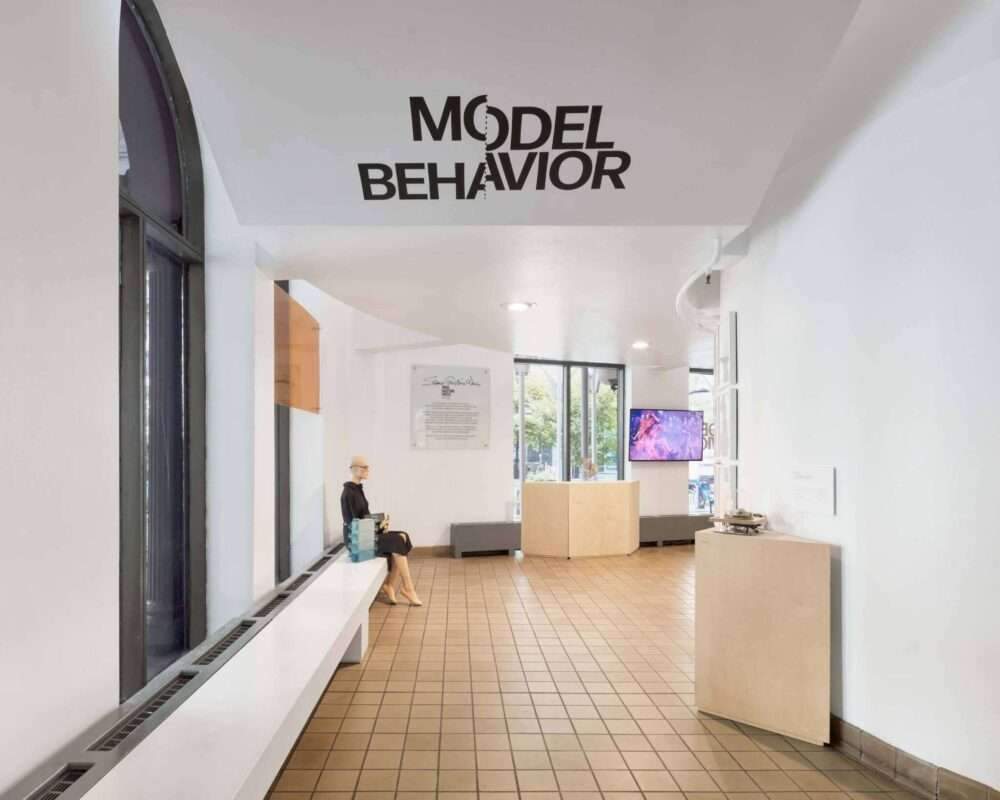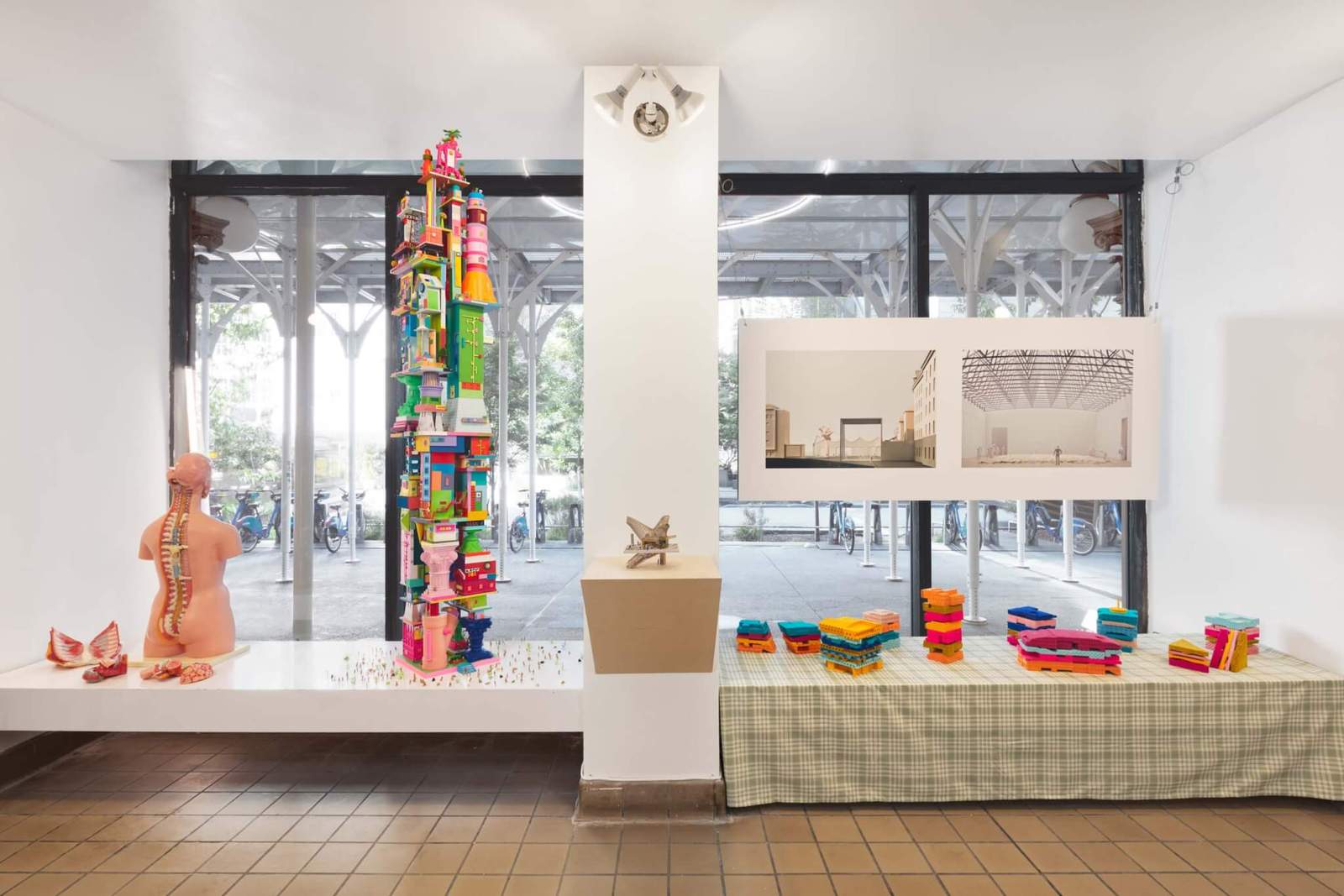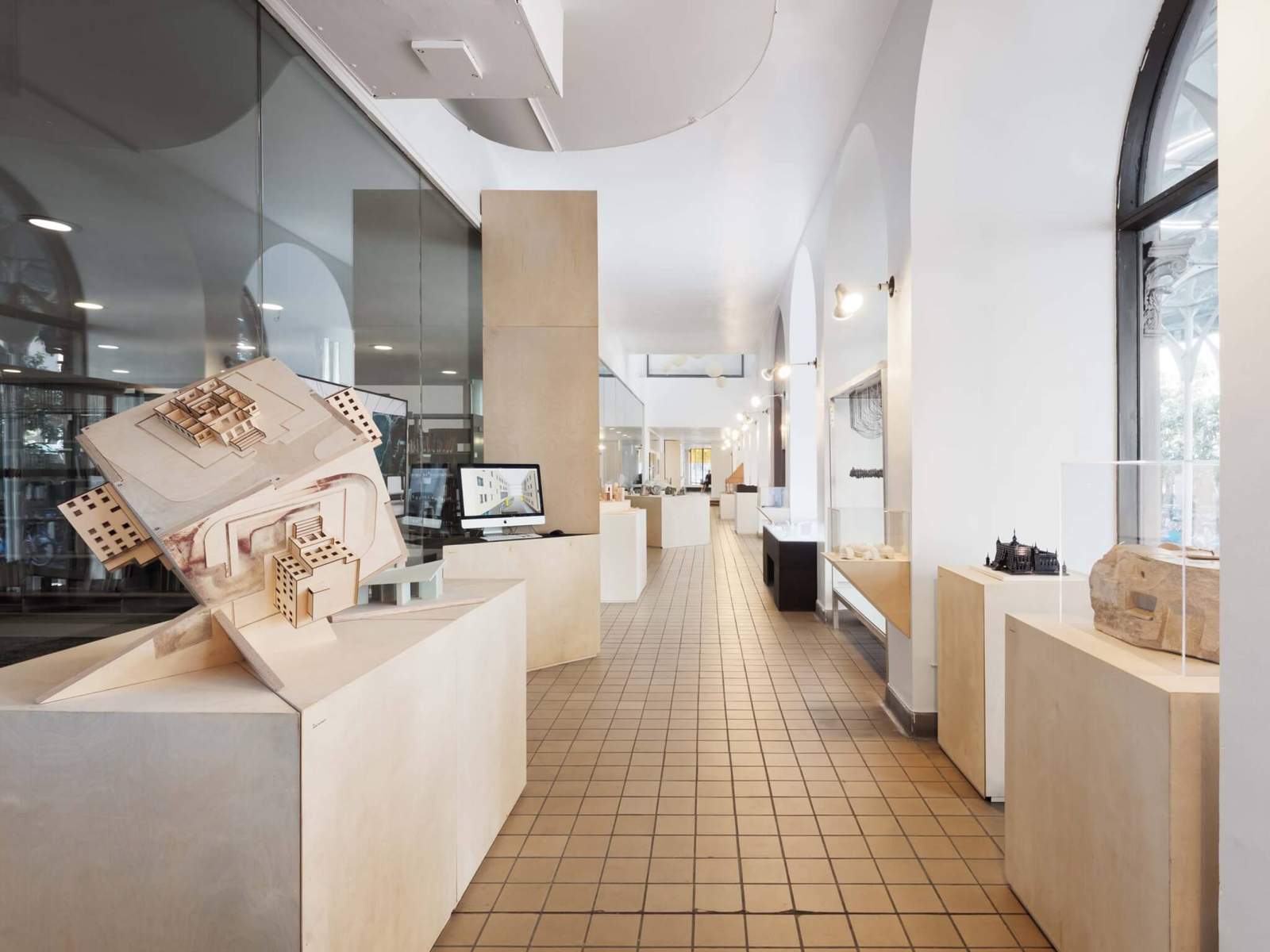Model Behavior, an exhibition at the Cooper Union, stages a range of engaging objects with frustratingly evasive results
Model Behavior
Curated by the Anyone Corporation
The Irwin S. Chanin School of Architecture
The Cooper Union
7 E 7th Street
New York, NY 10003
Open through November 18
One of the self-serving quotations tongue-tied architects turn to in times of expressive need is this platitude from Winston Churchill: “We shape our buildings; thereafter they shape us.”
Churchill made the remark in 1943 in reference to the old House of Commons Chamber in the Palace of Westminster, destroyed toward at the end of the Blitz two years prior. As a replacement was being planned, the owlish politician waxed about the spatial virtues of the old hall—intimate (there was, in fact, insufficient seating for members of Parliament), but also productively confrontational (you looked the opposition in the eye). The chamber was rebuilt in this configuration, so perhaps the U.K. has this reconstruction to thank for the “full democracy” it enjoys today.
That curious rating comes from the Economist’s Democracy Index, which serves as the basis of an installation by the Boston architecture firm Höweler + Yoon at the Cooper Union exhibition Model Behavior. Sure enough, there, on the upper register of Höweler + Yoon’s multi-part display—lodged within an arched window, showcasing its contents to both street and student—is Churchill’s aphorism. Absorbed alongside studies of legislative chambers in model and drawing, it doesn’t take much to read the line as a plea for disciplinary agency or, more broadly, for the power of architecture to effect change in the world.

Model Behavior, curated by Cynthia Davidson with Patrick Templeton, advances a similar argument, at least implicitly. Prompted by the current moment—“when climate change and Covid models are clearly changing social behavior” yet “are themselves in question,” as the introductory text wagers—Davidson and Templeton sought out the implications for spatial practice by returning to an age-old concern: the scale model. From there, the exhibition heedlessly interpolates architectural projects into a broad media ecology. But the effects of this wide-ranging curation are mostly left unsaid. There are perfunctory nods in the direction of politics and social justice, as well as an ambient fear that the profession’s proclivity for modeling has lost its relevance. That the engineering of human relations, in other words, is happening behind architects’ backs. Power rests elsewhere, but what else is new?

Worse, the curatorial agenda appears to rest on a categorical error. Information-dense media compete with geometric fetish objects for the viewer’s attention, as though they had anything in common. The assorted models, which defy casual taxonomy, are suspended in a relational unease. Favors from friends of the Anyone Corporation—the umbrella outfit under which Davidson produces occasional exhibitions and publishes the journal Log—have been called in, with yesterday’s big names contributing whatever bits of moderately compelling ephemera they had lying around the office. Along with a helping of hoary scientific implements and some lame retro bits, these stubs of “progressive architecture” pad out the show while making a rickety claim for their intellectual longevity. Cooper’s Colonnade is chockablock with stuff, but nearly all of it points in different directions.
Let’s take up a couple strands. First, rounding up architecture’s “digital turn,” there are several exercises in contemporary tech, including VR/AR, touch-screen prompts, GIS mapping, BIM modeling, 3D scanning, and QR codes that took too long to load. While these displays of algorithmic sprezzatura, in which forms, following some quippy script or another, shapeshift into other forms, are conceptually interesting, quite a few are also aesthetically barren, often exceeding reasonable limits of tedium. (This is partly a byproduct of the curators’ decision to forgo wall texts and instead print them in a booklet. Walking through the show thus involves a lot of scanning and flipping of pages.) For example, Certain Measures’ Mine the Scrap (2022) proffers a worthwhile experiment in reuse—custom software plucks odds and ends from the construction waste stream—but the resulting object doesn’t convince. Young & Ayata’s Spectral Montage 22 & 55 (2020–22) transposes an image of a chipboard model by artist James Casebere into the photogrammetric equivalent of spilled milk. And you could have confused Ruy Klein’s Red Mountain (Apophenia, Model #2, 2017), in which data is overlaid on a handsome topographic model, for a trade-show oddity.

A second strand caps off (one hopes) a generational trend in contemporary architectural practice: miniaturism for its own sake. Perhaps this twee tendency peaked years ago at the 2017 Chicago Architectural Biennial, which was similarly devoted to model-making and the construction of little worlds. In the best instances, these projects offered wry commentary on retrograde spatial norms. But at Cooper, Besler & Sons and Office Kovacs, which also exhibited in Chicago, show little inclination to deepen their inquiries into iconography, play, and assembly. NHDM Architects’ Interim Urbanism: Youth, Dwelling, City (2019) vibrates on a similar wavelength. In a deliberate echo of 2001’s bedroom scene, the piece arrays totems of various “fluid” domesticities (a subway turnstile, an illegal basement dwelling) on a gridded, illuminated surface. Presented as such, they are literal floating signifiers that do nothing to convey the experiences of the domestic worker or the houseless person nor how they differ from the lifestyles of the C-suite executive or consumer (invoked via diminutive citations to office towers and Apple stores). As if to satirize these entries, Davidson and Templeton nestle an easter egg—a ’60s Barbie house—at the end of the exhibition; it lands not as a moment of self-critique but as winking, dry kitsch.
The best pieces in the show wrestle with their currency in the image economy. This approach often instrumentalizes hybrid techniques of representation, where the physical and the mediatic are combined in effective (and efficient) ways. In the case of Studio Sean Canty’s Staging Form (2022), a 3D-printed maquette of a house augments a flat, but potent, composition that reproduces pictorial methods of display. NEMESTUDIO’s Naked Kings All Gone (2022) cryptically derides techno-utopias through an Instagram-friendly, color-saturated diorama. And d.esk’s Two Scrolls (2019), a “vaguely architectural” bundle of cheap material, refracts the disinterested eye of Thomas Demand’s photography (his Learning Center 50, 2015, hangs nearby) through the medium of design (or is it sculpture?). By narrowing their message, the models end up saying more than the show itself.

Taken together, however, it’s all just white noise. Though the curators’ willingness to address supra-architectural concerns is to be commended, their execution only inspires perplexity and fatigue. The subject alluded to in the exhibition’s title—that of conduct—goes underexplored, though perhaps it is wishful thinking to hope that an architectural culture allergic to critique might take up the problem in earnest. As Model Behavior shows, ponderous apposition has long displaced opposition as the discipline’s default mode of engagement with the wider world. Meanwhile, the curators’ gentle skepticism toward the rationalist impulse to observe, catalogue, and make projections betrays a tacit belief in technocratic expertise (the right kind, naturally). In the wake of midterm madness, to what machinations should we entrust the safeguarding of our own “flawed democracy”? Certainly not the ones that enabled this mess in the first place.


